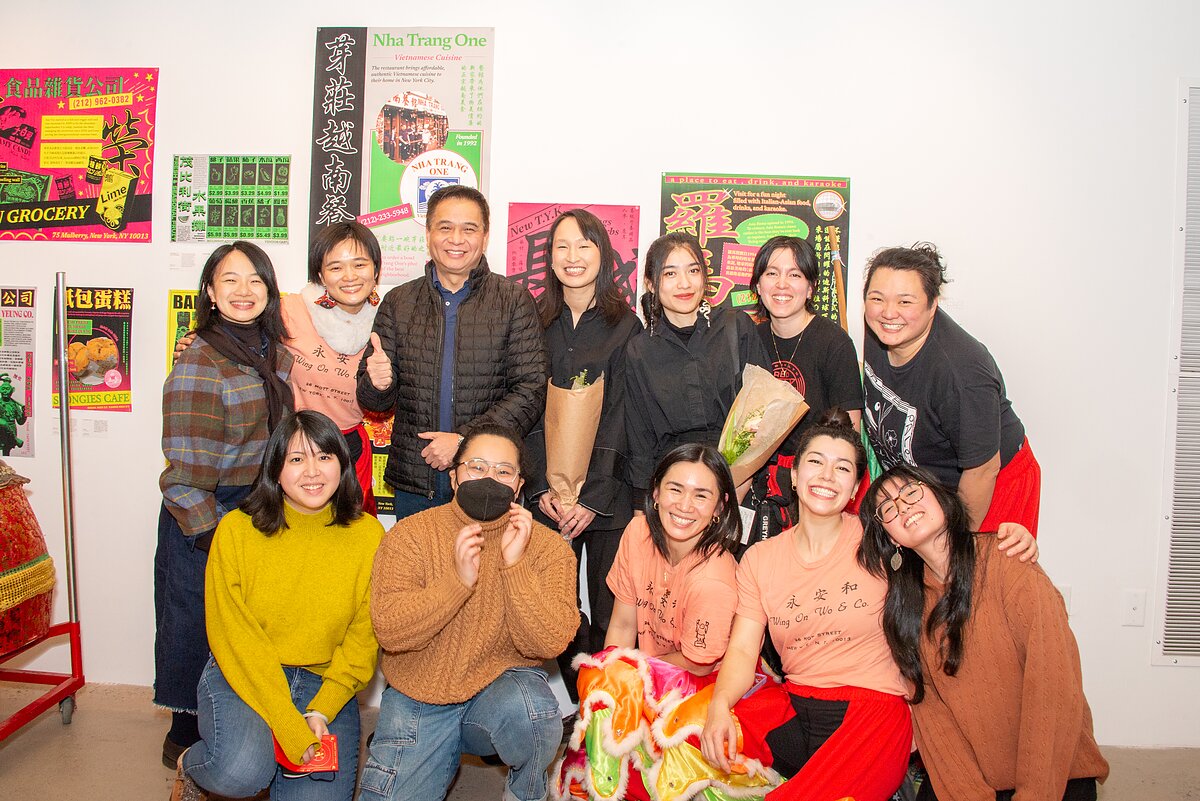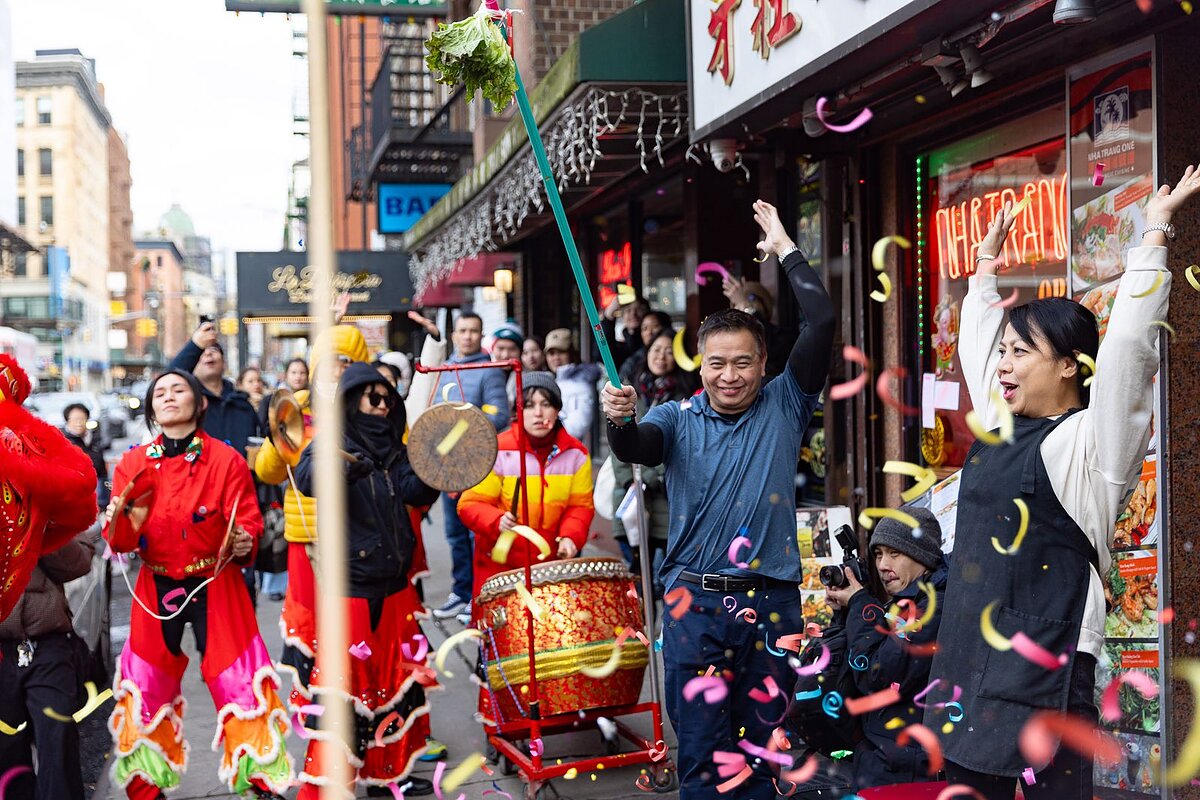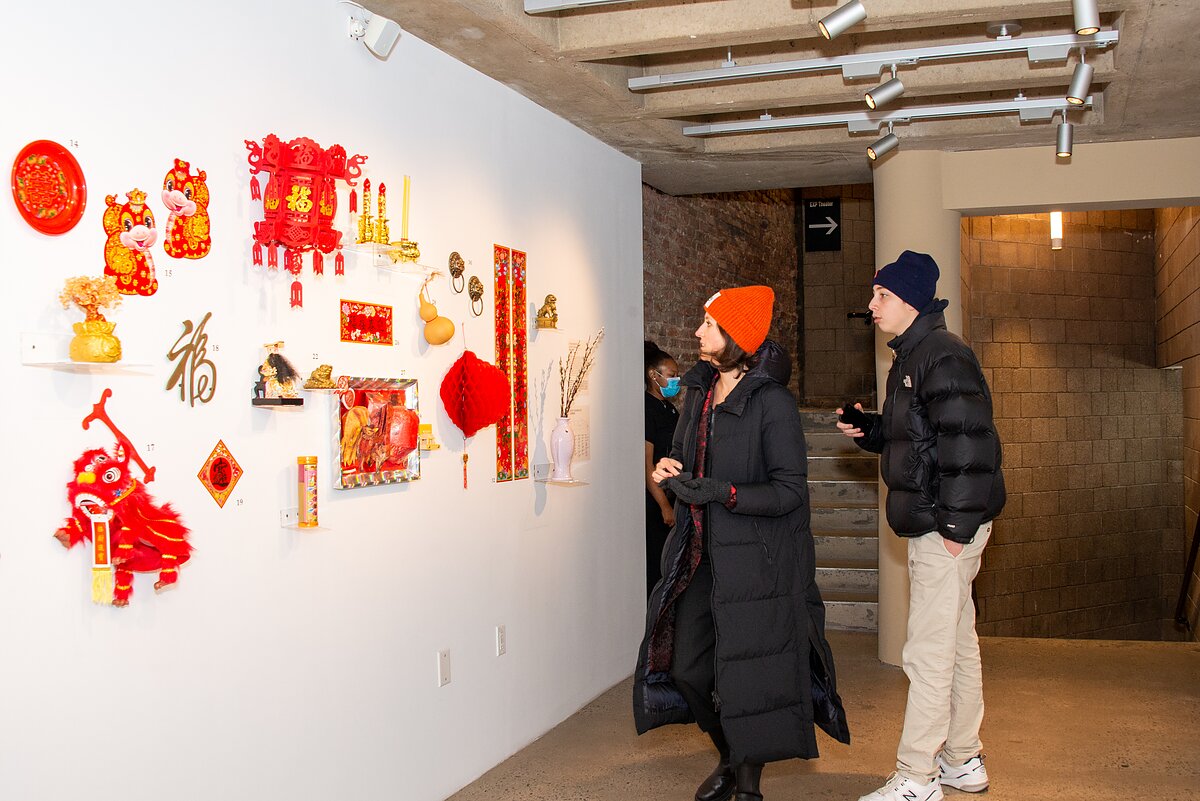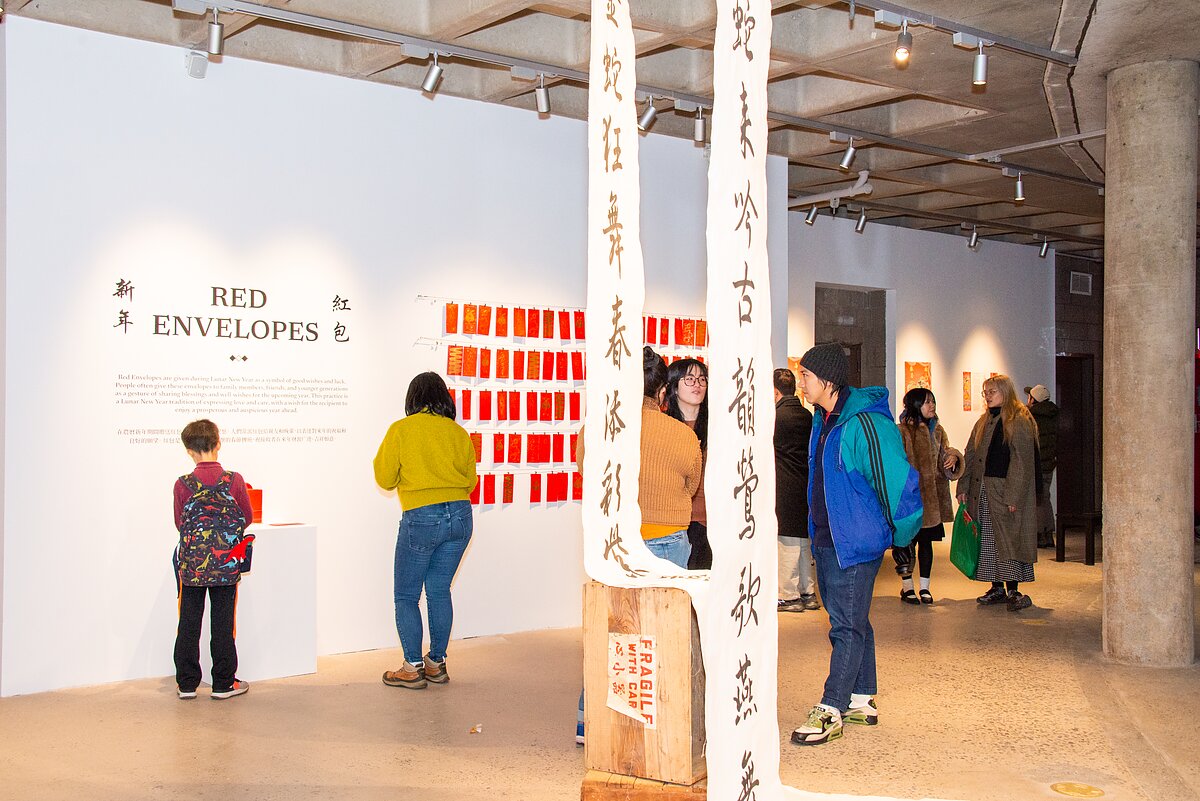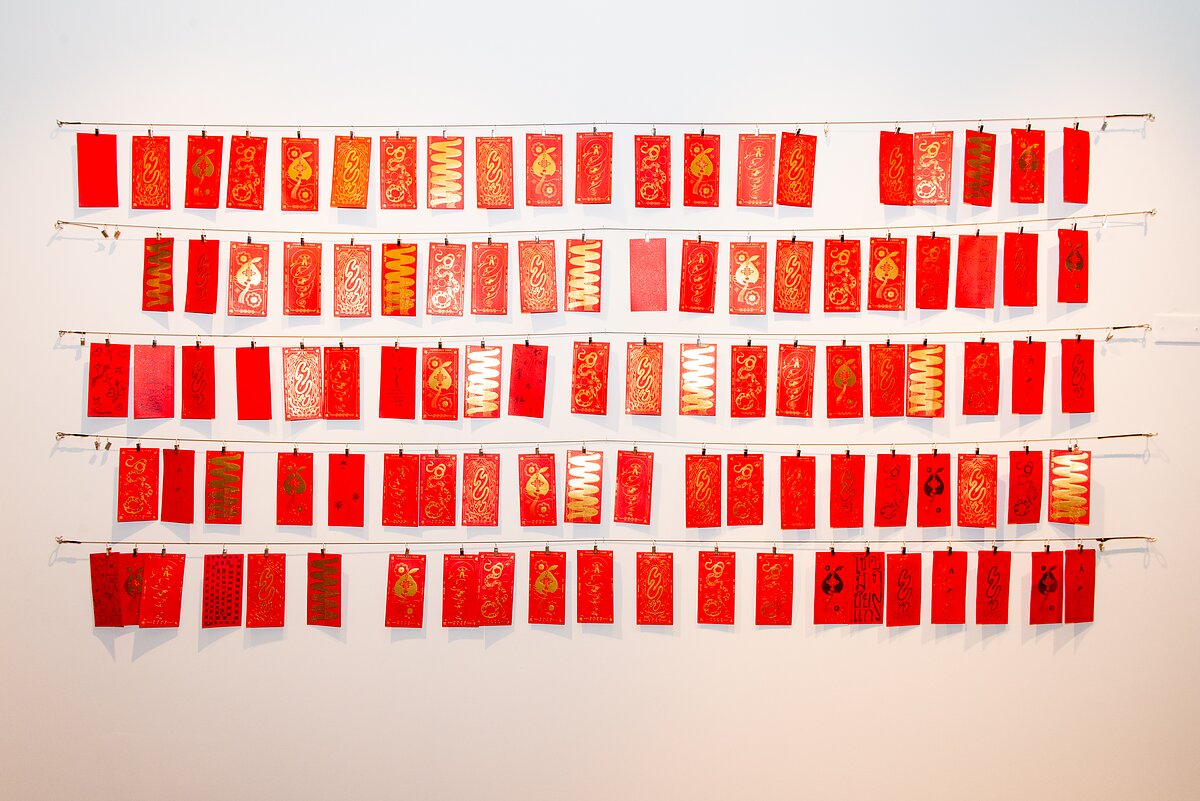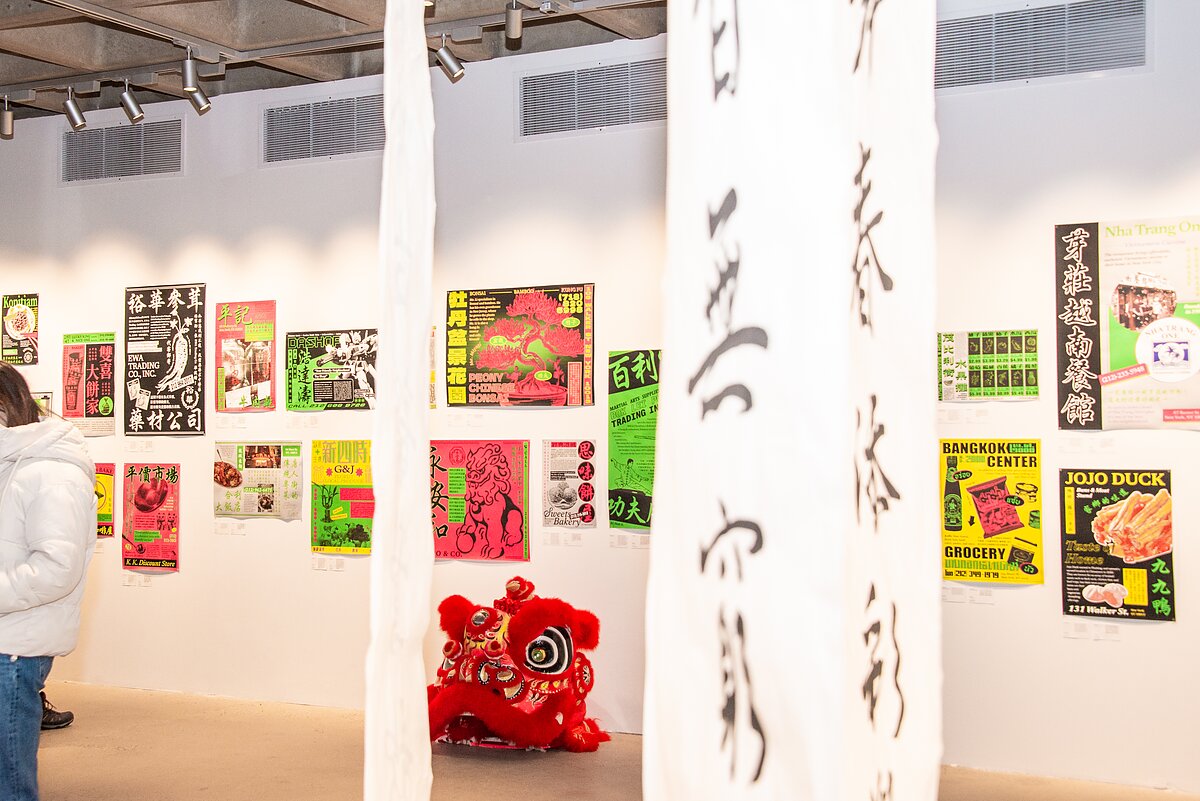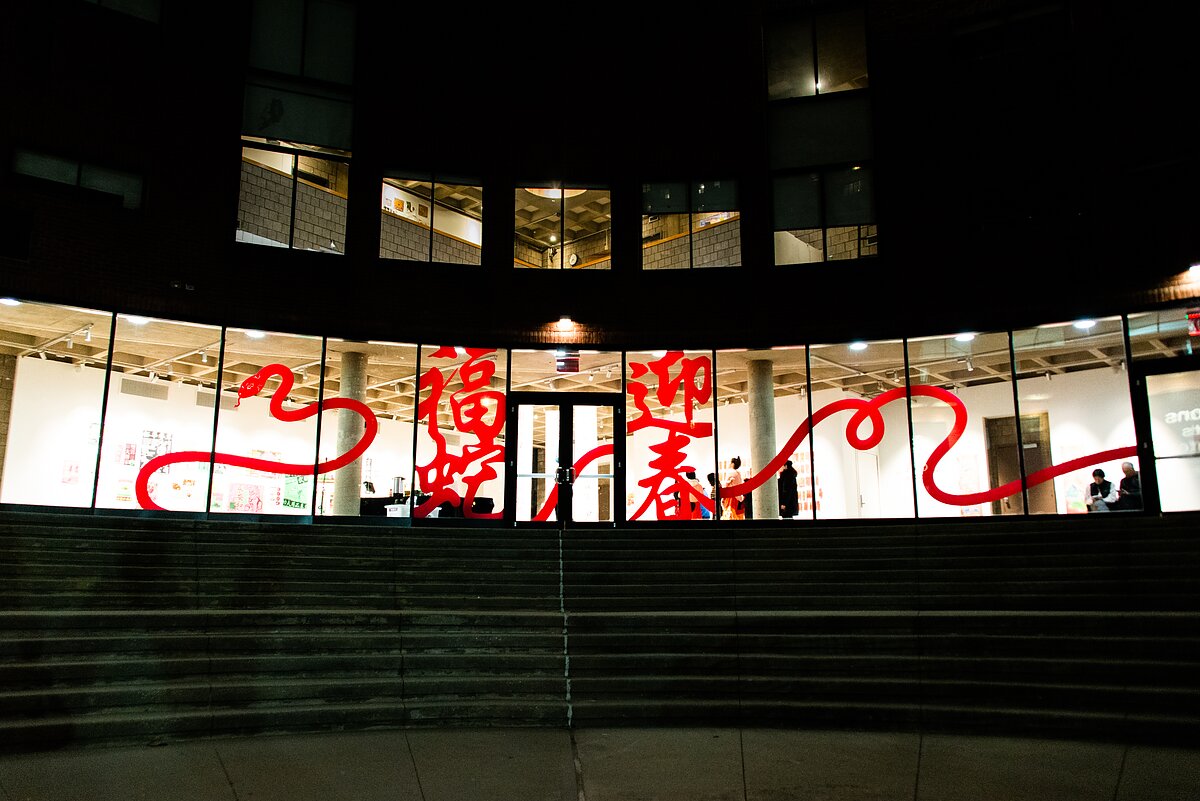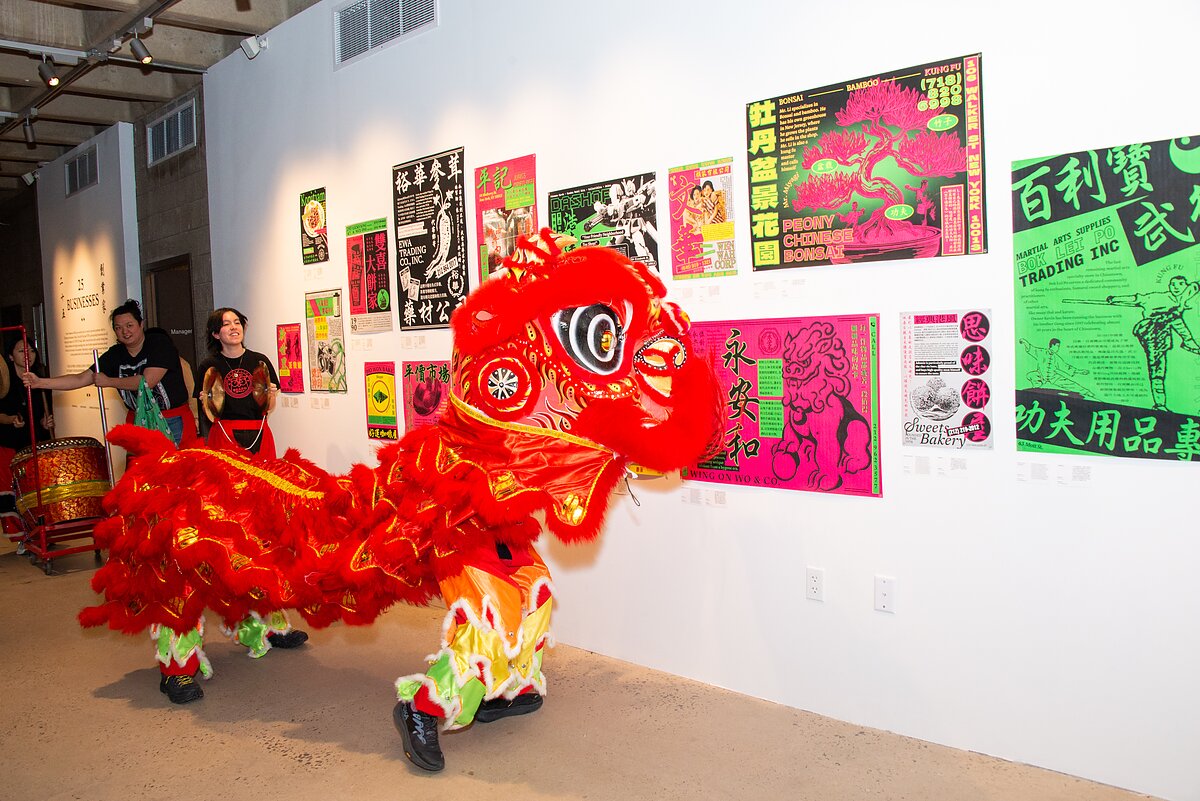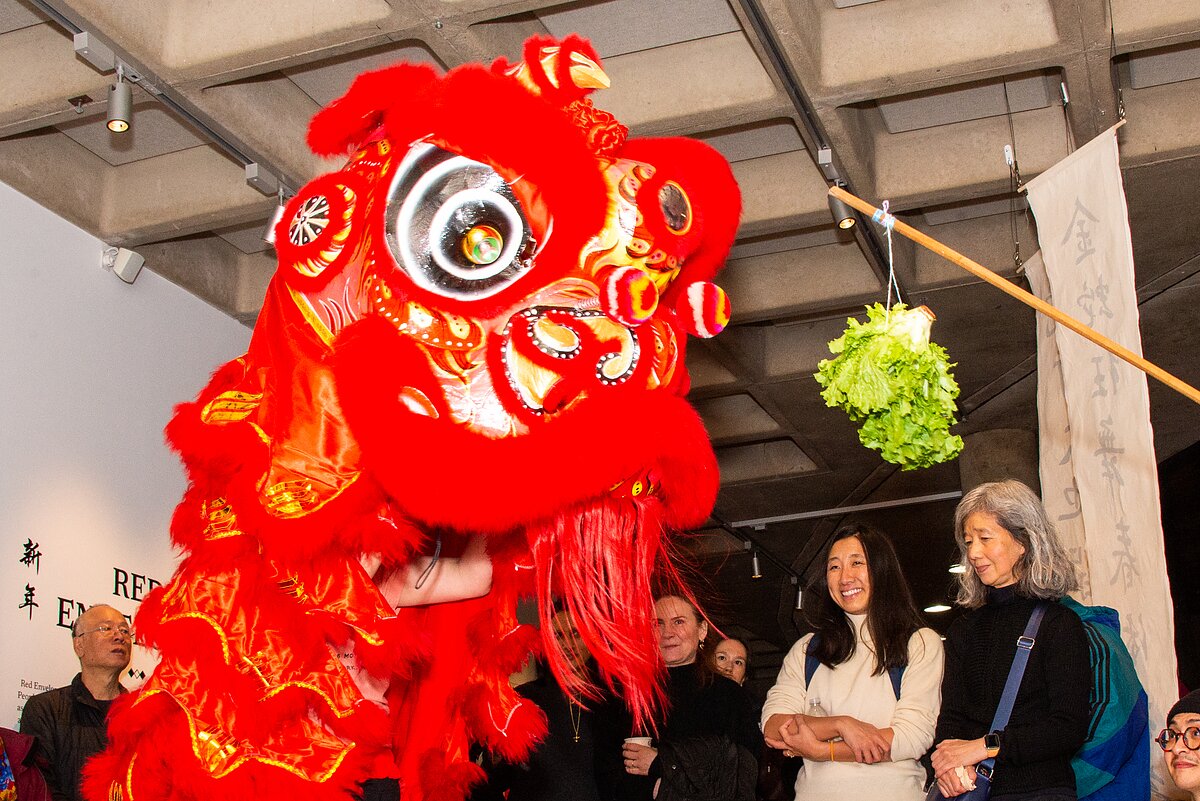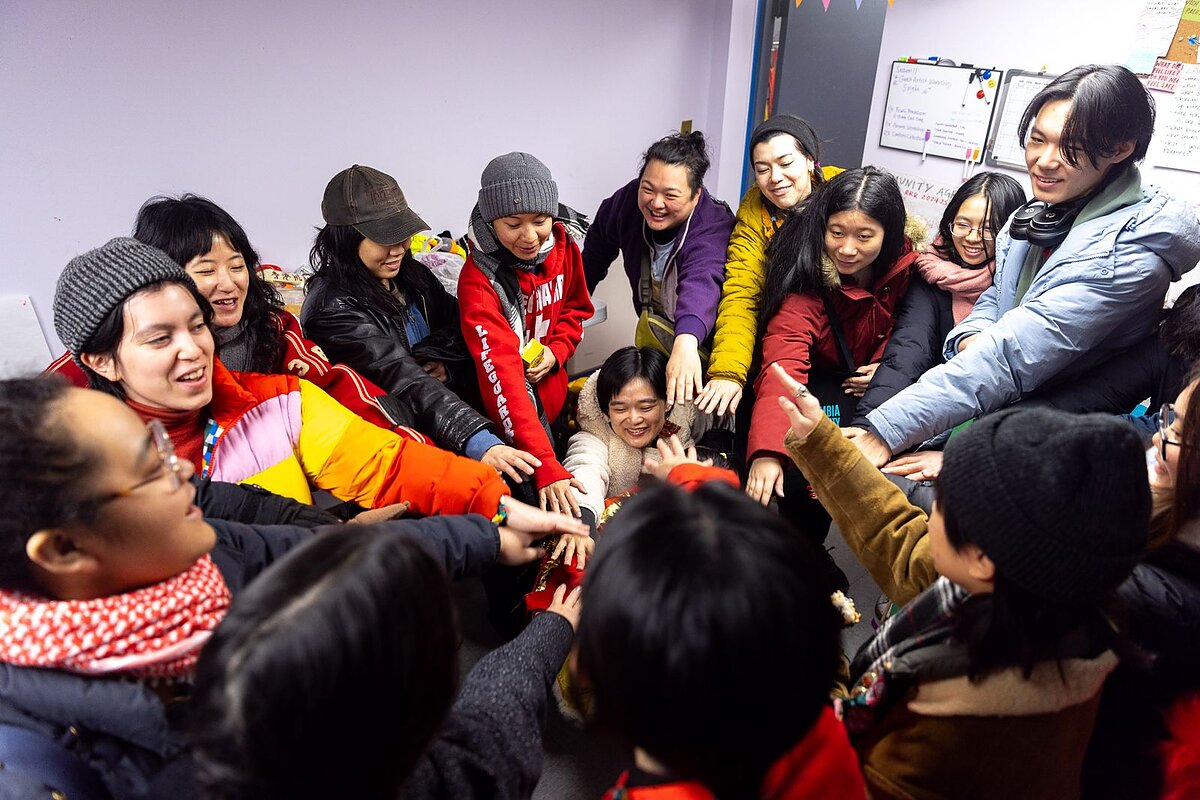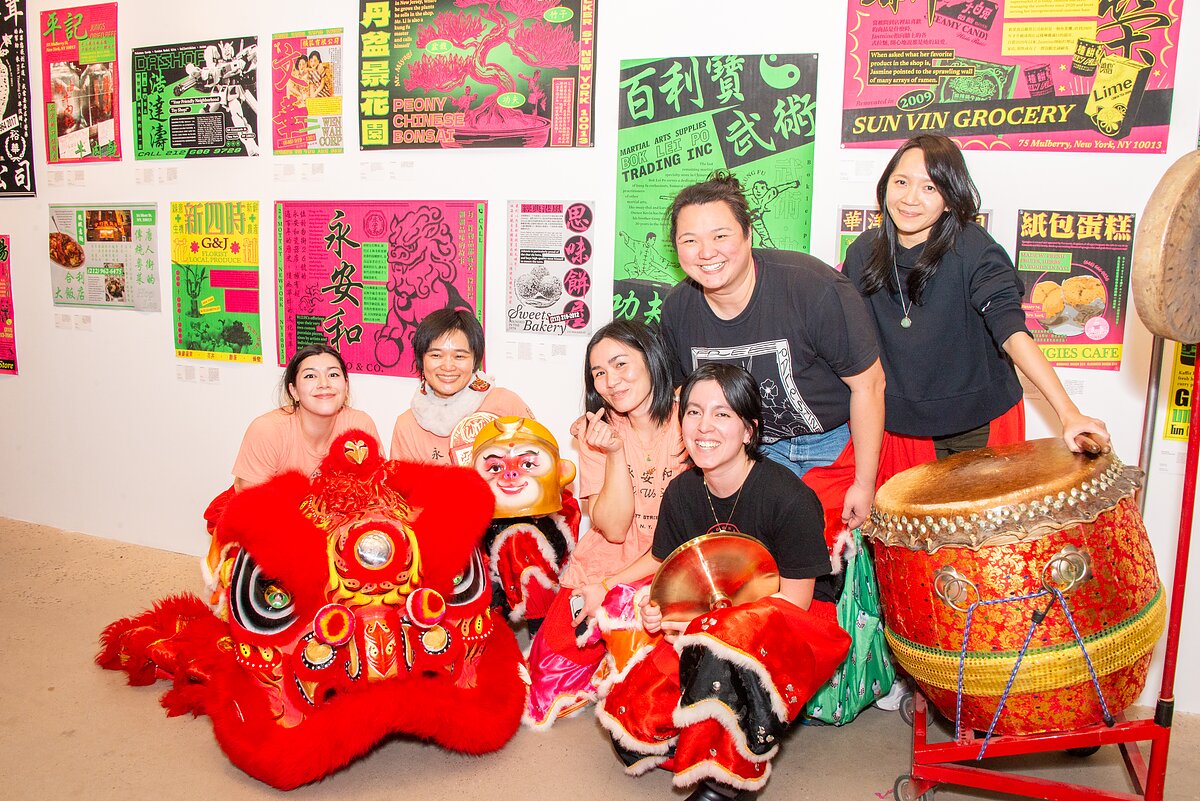W.O.W. Project’s Mei Lum and lucky risograph’s Amanda Chung on Supporting Chinatown through Art
Every neighborhood has certain establishments that anchor its communities and help to create and define a distinct sense of place. Located on Mott Street in Manhattan’s Chinatown since 1890, Wing on Wo & Co.’s iconic scarlet storefront is one such establishment. As the oldest operating shop in the neighborhood, it has seen Chinatown through many changes and challenges—in recent years, the lasting impacts of the COVID-19 pandemic and the related surge in gentrification and displacement have underscored the importance of its continued existence.
Mei Lum is the fifth-generation owner of the business which she took over in 2016. Very immediately, she understood that Wing on Wo & Co. is more than just her family’s storefront; it is a place that holds histories and brings people together. Staying true to this legacy, Lum founded the W.O.W. Project, a women, queer, and trans-led community initiative using art and activism to grow and protect NYC Chinatown’s creative culture in a time of rapid change.
Responding to COVID-19’s lasting effects on Chinatown businesses, for the past five years, the W.O.W. Project has organized the annual mutual aid program, “From Chinatown, With Love” (FCWL) in collaboration with Abrons Arts Center, pairing AAPI artists with local businesses to reimagine Lunar New Year traditions and spotlight the people that make up the community.
Reining in the year of the wood snake, this year, the W.O.W. Project collaborated with lucky risograph and Midnight Project for an exhibition at Abrons Arts Center that celebrated the 25 small businesses participating in FCWL. Meanwhile, artists A Liang Chan, Jia Sung, Stefanie Tam, Rose Wong, and Fiona Ye created red envelope designs inspired by these community conversations and the serpentine spirit of transformation—patrons who spend $35 or more at participating businesses will receive a pack of 5 artist-designed envelopes with accompanying stickers.
This past January, a few days before the exhibition’s opening, we spoke to Lum and lucky risograph’s Amanda Chung about this year’s program, what they’re thinking about in the year of the wood snake, and starting Chinatown’s first all-woman and non-binary lion dance group.
Mei Lum: I’ll try to keep it brief! In 2016, my family was going to shutter the shop and let go of the building that we own. Around that time, I had met Diane Wong who was a PhD student doing neighborhood interviews with residents, activists, tenant organizers, and property owners. I was an interviewee and after she heard my story, she invited me to go on the rest of her interviews with her. That really put my family’s situation into perspective thinking about gentrification and displacement and the real impact it would have to let go of a space like Wing on Wo and buildings like ours.
That really started the wheels turning for me. I didn’t have any plan to start an organization, but Diane and I wanted to start some type of community conversation series born out of these interviews that we were having—it felt natural to hold them at the W.O.W. storefront. From there, we kind of just kept going.
The young people, artists, and activists wanted to use art and activism as the medium through which we wanted to engage and talk about what displacement—and specifically cultural displacement—would mean for the neighborhood. I thought about my own legacy and how the shop and the building run through my matriarchal line. I’ve been surrounded by really strong women growing up and that shaped who I wanted to focus the W.O.W. Project for.
We specifically center women, non-binary, queer, and trans young people in everything that we do and in all of our programming. We’re going into our ninth year now; time really flies! Sometimes 2016 feels like forever ago; right now feels like a weird circle because of the return of a Trump presidency. I’m remembering how folks were feeling in the community back in 2016—feeling really powerless. It’s obviously a different time now, but I’m still kind of feeling that weird time warp and loop.
ML: “From Chinatown with Love” was actually born out of the COVID-19 pandemic in 2020, witnessing the quiet, desolate streets in Chinatown and hearing from neighbors about how they were really struggling. We wanted to figure out a way where we could reinterpret an existing neighborhood tradition like free calendar and red envelope giveaways during Lunar New Year. There’s a mutual aid element to it, in that we’re producing everything for free, supplying it to the businesses, and then incentivizing folks to spend $35 or more to receive this artist-made piece.
It’s been a really incredible experience to relationship-build with the businesses that we’re featuring this year. It’s actually our second time supporting this group of businesses. We’ve been thinking about how mutual aid support doesn’t mean it’s just a one-time or seasonal thing—it actually spans across years and and a lot of time and care.
What we’ve been hearing from a lot of the businesses is that they’re really struggling, and continually struggling from the bad economy, and also still recovering from COVID. What I really love about “From Chinatown with Love” is it has this power to address what is most currently needed by the community. Last year, we focused on the fight against the construction of the mega jail. That’s ongoing, and we really wanted to bring light to that. I really appreciate how we embed and weave all of these different neighborhood concerns and stories into what Chinatown is.
I could say so much about how sometimes the Chinatown narrative feels really one dimensional. I think what we’re trying to do with this project is to highlight the human nature of all the people that make up the neighborhood.
Amanda Chung: I agree with everything you said. From the perspective of someone entering midway, I think the intentions around W.O.W. Project were really clear from the start. Sustainability is one of keywords that stuck with us, especially this year. We really want to make sure the amount we could give to each business was impactful monetarily.
It’s also helped reinvigorate customers in the neighborhood. We love hearing folks talk about what places their family would always go to, etc. We all have our own relationships to Chinatown so hearing all these stories has been really special.
ML: We begin from a place of trying to support the long time mainstays that are in the neighborhood—ones that don’t have much marketing or online presence. Obviously there’s a lot of trial and error. We start many months beforehand running around, talking to folks and pitching the idea to business owners to see if they’re even willing. A lot of it is trust building, explaining why we’re doing this. Like, what is our agenda?
I use my grandfather’s name sometimes and the legacy I come from to legitimize myself with the older generation, because I think they’re inherently skeptical about what help means. There’s a lot of pride too and not wanting to accept help. But being five years in, folks now know about the program. There are also business initiatives that are happening in Chinatown by other groups.
I think the younger generation has helped create a context and an environment for a reciprocity that I think didn’t really exist in Chinatown in the past—or it looked different. Perhaps it was more reciprocity within the same generation but now it feels more multi- and intergenerational, which is very exciting to us.
We’re developing relationships with businesses but there’s also artists involved. We invite collaborators to consider how to create art for community. I was talking to a friend and a past artist collaborator, Singha Hon, about this last night. She was saying how she really loves “From Chinatown with Love,” because it teaches artists how to tell stories about other people in a way that doesn’t take away their agency. Because relationship building and trust building is so much at the core of “From Chinatown with Love,” it really feels central and emanates out from the art that is produced.
AC: Each year that we’ve been doing this we’ve been building trust with the artists too. Each year, we rotate a different group of artists and work with them and the businesses to make sure they feel heard and represented through the artwork.
This year, we’re working a lot with different motifs and are honoring the businesses on a specific wall in the exhibition. We were inspired by antique posters but each one features the businesses that we’re highlighting. When we first showed these designs to the business owners to get their opinions, it was interesting. A lot of them said they didn’t know how to comment on them. It was really nice to empower them to tell us things like “we want the logo bigger” or “change this color.”
Supatida, Winnie, and Alice have really been spearheading the design & exhibition portion so I’m going to be talking on behalf of them. As this exhibition is going into its second year, we’ve been thinking of it as a kind of retrospective of all of the businesses that we’ve represented. We also have a few different themes.
As I mentioned before, there’s the business poster wall, which features 25 posters of each of the businesses. On the adjacent wall, we feature a door god illustration by artist Singha Hon.
ML: The door god is such an important motif in our project this year because it really embodies the spirit and the conversations we’ve been having with business owners. We did a lot of interviews to understand where folks were and what support they needed. We came out of these conversations thinking about this idea of protectors and letting go, releasing, and inviting. What type of energy do we want to release and invite in for the new year?
Because of the nature of WOW Project’s work and our community, we really wanted to create a queer version of door gods, which are often very heavily armed and masculine warrior figures that guard homes from evil. It was important for us to have this motif be legible to the older generation so we worked with Singha to incorporate different motifs and symbols that the door guides could wear that would embody this wish for the year.
We were also discussing how Chinatown is so dark these days; everyone closes so early. There were stories about business owners spending more money on illuminating their storefronts with lights. So we wanted the door gods to emanate light. They really embody the spirit of what this exhibition is about and what we’re trying to say and share with folks.
ML: I’m thinking a lot about this idea of transformation with the year of the wood snake—what that means for myself individually and for my work at WOW. How it doesn’t have to be a complete overhaul but more like shedding skin in a way that allows for old to give rebirth to something new. I’m not quite sure what that looks like but I’m really excited and curious about how I can carry that energy into the rest of the work.
I also feel really uplifted by the knowledge that “From Chinatown with Love” is far from the first mutual aid project in the area. Mutual aid has existed in Chinatown from the very beginnings of when the neighborhood was formed. I feel really uplifted by that.
In this idea of renewal, I’m also thinking about honoring legacy and that which comes before you. This is so timely for Lunar New Year too, because of all the cultural traditions of honoring ancestors, as well as the dinner, the lion dance, etc. I feel really lucky that From Chinatown with Love can be part of my Lunar New Year tradition.
This year, we also started Chinatown’s first all-woman and non-binary lion dance group. We do celebratory processions for all the businesses who are part of the program. We performed during the launch day and it was really fun!
There’s something about that collective ritual that I love about Lunar New Year. Everyone in the neighborhood is cleaning their altars, putting out oranges and pomelos and sitting around tables with one another. But something about the lion dance and being able to be the one under the head and going to my own store to cleanse the energy was so cathartic.
